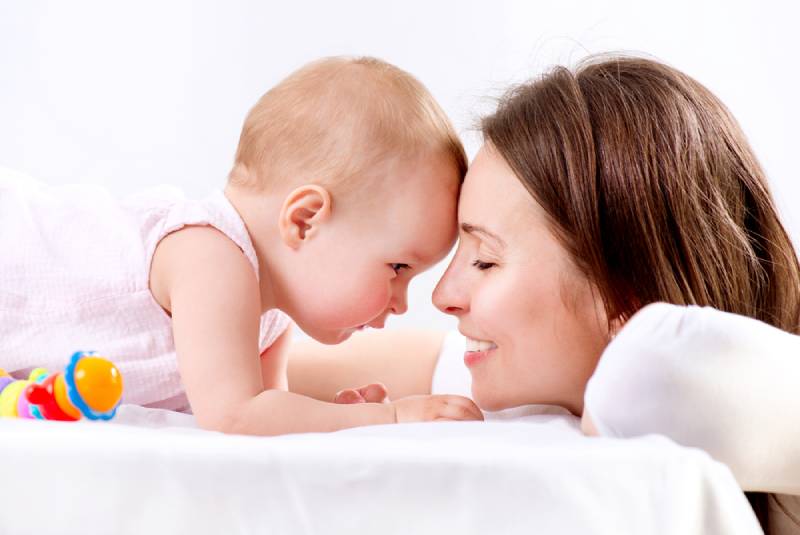In the life of an infant, there are so many baby milestones and one of the most important ones is learning to communicate. Every parent wants to know the answer to the question: When do babies say mama and dada?
Before becoming legit talkers, babies communicate in various ways with their body language, head shaking, and pointing with their fingers.
Once they start babbling, variations of “mama” and “dada” are usually the first words in their coo and babble dictionary.
And that’s when the real competition between parents arises. Jokes aside, you’re still probably curious about whether your little one will first learn to say “mama” or “dada” (or maybe both).
Chances that your baby will learn to say both “mama” and “dada” at the same time are not that high. Usually, babies utter either one or the other (depending which sound they prefer) and in time they learn to use both words accordingly.
It’s important to know that your baby’s language skills are impacted by your use of words and how you communicate with them through play.
Since children imitate their parents, there are so many ways in which you can encourage your little one’s language development and today we’ll learn together how to help them communicate!
But, before that, let’s first check when you can expect your child to start calling you “mama” and “dada”.
At What Age Does A Baby Say Mama And Dada?

Other related questions to this one are: When can babies say mama and dada? When should babies say mama and dada? and When do babies start talking?
As already mentioned, every child’s developmental milestones (including the child’s language) are greatly influenced by play and the relationship with their parents. Some children need more time to start talking, while others need less.
So, when do babies say mama and dada? All in all, we could say that it’s an individual thing for every child.
Generally, by seven months, most babies start combining syllables and uttering words like “mamama” or “dadada”.
These first babbling sounds are characteristic for the first phases of baby talk. By nine months and older, babies learn to pronounce those words in a more correct and comprehensible way.
But, there’s a catch! Just because a baby knows how to pronounce it, this doesn’t mean they know the real meaning of the word and how to use it properly.
You’ve probably seen it multiple times on the TV or even witnessed it in person when a baby starts marking everyone around them as mum and dad.
It’s because they don’t really understand who mum and dad are, so they use those words with no specific purpose.
But, around their first year, babies become aware of the context and the real meaning of the words.
They will look you in the eye, smile, and proudly say “mama” or “dada”! That is how you’ll know that they really mean it and know what they are saying which is one of the most heartwarming moments in every parent’s life.
How Will You Know That Your Baby Understands What You Say?

One way to check whether your little one understands the meaning of the words “mama” or “dada” is by asking them questions such as: Where is dad? or Where is mum?
If your baby understands what you’re talking about, they will look at their dad or mum or even point with their finger. Also, you can tell your little one to do a simple task such as grab their favorite toy.
If they do it, then you know they understand you completely and it’s only a matter of time before their baby language will become fluent. Also, you will probably want to know if they understand one of the most famous words of all and that is: No!
If they start looking at you or at least pause whatever they were doing for a moment when you say, “No!”, then they definitely understand. That is how you’ll know whether they are choosing not to listen to you on purpose or because they simply don’t understand what you’re trying to tell them.
How To Encourage Your Baby’s Ability To Communicate?
From babbling to using complex gestures, there are so many speech milestones in every baby’s life. To help your little one in the process of learning to communicate, here are some effective techniques in relation to their age:
Birth – 3 Months
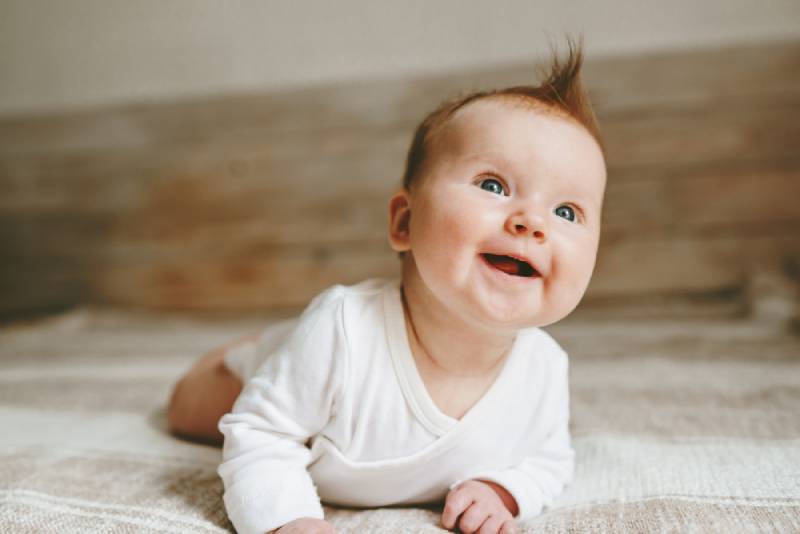
From birth to 3 months old, babies are solely focused on their parent’s voice. They try to imitate sounds their parents make and they do it with the help of baby babble and lots of cooing.
This period is characteristic of vocalization without consonants. To help your baby acquire as many sounds as possible, you can try “sing-song” speech which is beneficial for a baby’s development.
Sing to your little one and use a variety of intonations.
Whenever you introduce a new sound, your baby will look at you with excitement and that’s the effect you want to achieve.
And don’t forget to talk to your little one! Just because they don’t understand what is being said to them, they like hearing the sound of your voice because it’s soothing and interesting to them.
While doing all that, don’t forget to establish eye contact with your baby because this will encourage them to imitate your sounds and it will also help you with bonding.
3 – 6 Months
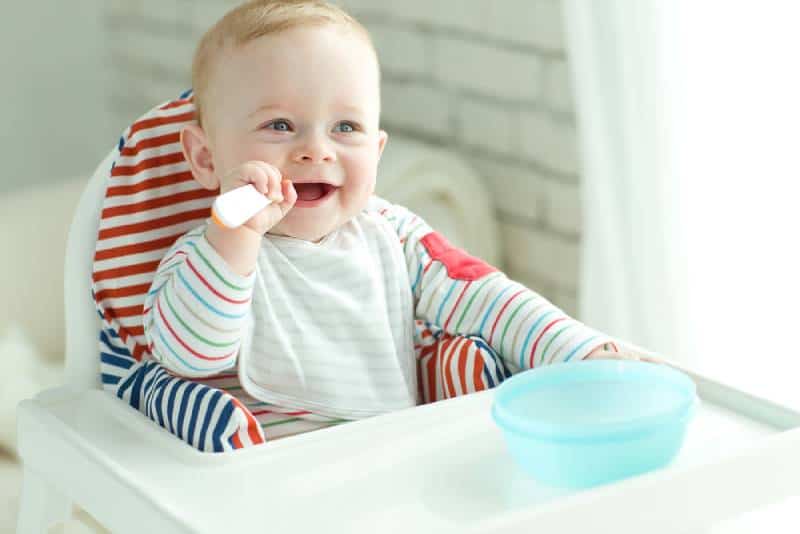
During this period, your baby is observing and absorbing more details, sounds, and things around them. So, it is important that you look them in the eye, talk to them as much as you can, introduce them to different body language signs, smile at them, and so on.
Here’s one interesting technique. When your little one says something in their babble language, you can imitate their sounds.
They will find this amusing and they will feel as if they are really talking to you. When you look at it closely, it really does make sense.
When you talk to them using their own language, they feel as if you understand them.
Also, whenever your little one imitates your sounds, repeat the sound/word again.
As you already know, practice makes perfect!
The more you talk to your baby, the more they will be encouraged to continue producing sounds which are the basis for what’s coming next and that is real words!
6 – 9 Months
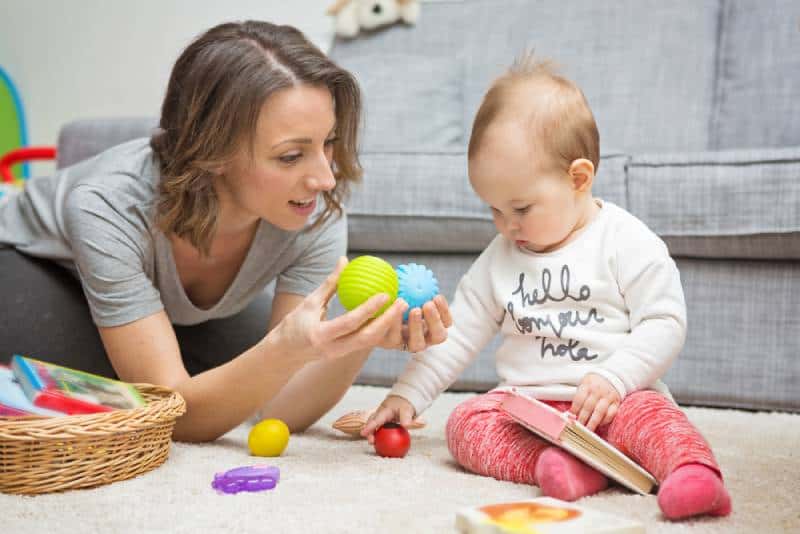
A six to nine month old baby will improvise and play with different sounds that often sound like real words. So, you might think that they are saying “mama” or “dada” but they are actually playing with sounds not really knowing the real meaning of it.
You will notice that your baby starts to differentiate between a happy and a sad voice. When you make a happy voice, your baby will smile and when you say something in a sad or angry tone, your baby will look confused, sad, or even start crying.
At this point, you can introduce your baby to a Peek-a-Boo game while playing with their hands.
You can use different toys and talk about them or instead, talk to them, which babies find even more entertaining.
And don’t forget the mirror! Recently, I used this mirror technique with my cat and it was hilarious. When my cat saw himself in a mirror, I asked him, “Who is that creature?” and according to his facial expression, he himself didn’t know.
I always say that babies are like cats. They learn A LOT from simple play and from lots of different questions.
Your baby might not understand the meaning of words at this point, but they will know that a certain question is connected with / describes a certain thing.
Additionally, speech-language pathologists claim that asking your children questions makes them feel like what you’re talking about is important.
These connections are what helps babies with their further language development. They will remember the sound “plush” and connect it with their plush toy.
I also suggest playing with interactive books and toys for toddlers because they offer different shapes, sounds, and materials.
9 – 12 Months

At this point, your baby will reach an important speech development milestone – the beginning of understanding real words! If you ask your little one questions such as,”Where is daddy?” they will point at him or look for him.
Your baby will point with fingers, use body language, and produce different sounds when asking for something from you.
One of the most famous signs used by children is giving their toy to someone.
When they do this, it means they want you to play with them. To help improve your little one’s body language, you can introduce them to waving “bye-bye” when their daddy leaves for work or in a similar context.
By doing this, your child will learn when it is appropriate to use a certain word. For example, when someone enters, you can say “Hello” by waving with their hand and your baby will understand that this is how we greet people.
The best method of acquiring language for babies is the combination of body language and sounds in a certain context.
This helps them understand why we do what we do. It gives them meaning.
If you only repeat certain words without specific context, it will be harder for a baby to understand the real meaning of it.
12 – 15 Months
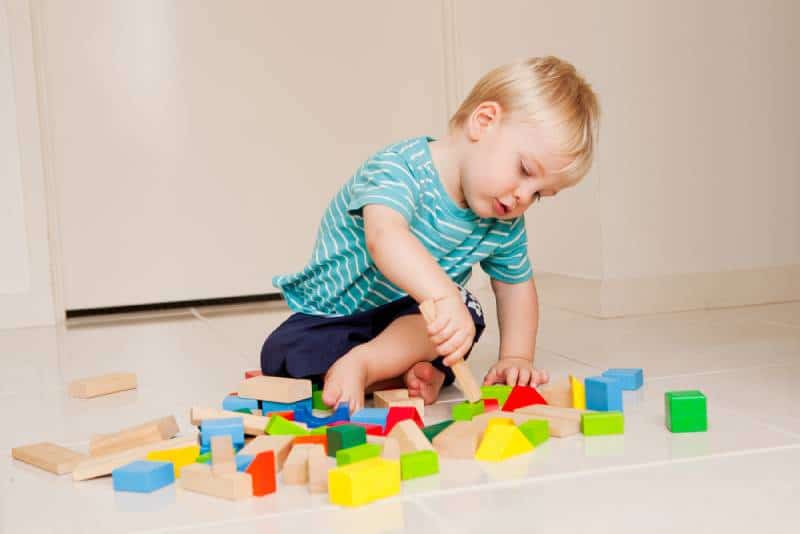
And here’s another milestone – beginning to use real words! If you’ve been repeating “mama” and “dada” to your child, chances are you will hear them say these words for the first time and, undoubtedly, these will be their favorite first words.
At this point, your baby will have a few favorite words that they are constantly repeating to you, but they will understand a lot more. They just need more time to put them in their little dictionary and start using them.
You can help your baby learn new words by introducing them to things around you (teddy bear, juice, chair, etc).
Show them a certain object and name it. Hold a teddy bear and tell them, “This is a teddy bear” or you can just say, “Teddy bear”.
Another fun way of learning new words is with the help of books for kids.
You can ask your little one to name animals in a book or ask them different questions about the pictures.
When your child successfully names animals or things he sees in the picture, reward him by giving him applause because this will encourage them to continue naming things and to do the best they can. Family games will also help.
It’s important not to force things like introducing them to abstract concepts and such. Instead, use things from everyday life and gradually build sentences starting with one word. You can never go wrong if you start with the basics and gradually move to more complex structures.
Note: If your baby isn’t saying anything (not only “mama” and “dada”) by 12 – 15 months, consider consulting with your pediatrician who might recommend speech therapy.
15 – 18 Months
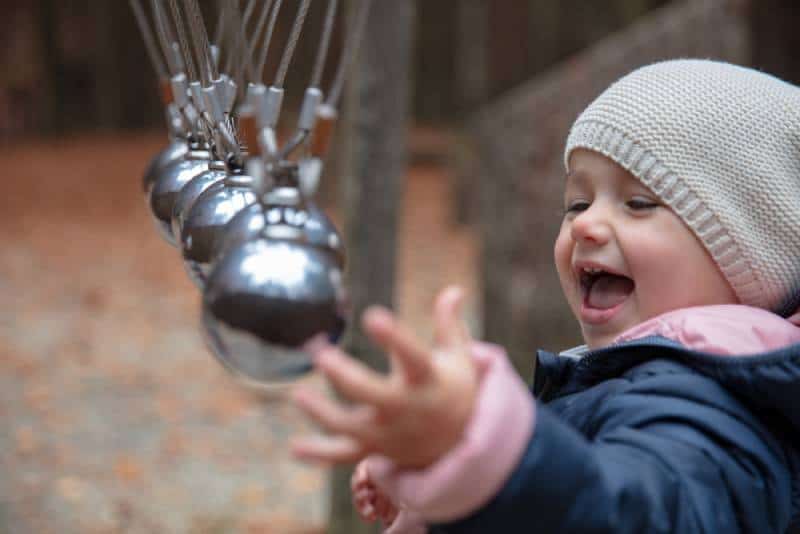
Your little one will continue learning new words and expanding their vocabulary. They will be constantly pointing at new things and naming them with excitement. Also, their body language gestures will become more complex.
To help your child communicate with you, you can ask them to point at their body parts (nose, arms, legs, and so on).
You can do it first and then ask them to do it. Also, there are plenty of songs that include body parts, so you can try doing it through singing as well.
When your child brings you a certain object or points at it, start a conversation about it with them. You can describe the color of that object, or describe what you see in the picture (if it is a book).
By adding more and more details, you are subtly introducing them to new words.
A child’s brain is like a sponge. It has the capability of absorbing tons of new information, words, and gestures.
Did you know that a child’s brain burns up twice as much energy as an adult’s brain? Well, that explains everything, right?
18 Months – 2 Years

Your little one will start putting words together like “toy play” or “want ball”. They will find a way to tell you with a few words what they really want from you.
To boost their communication skills, you can ask them to assist you with something. You can ask them to bring you their T-shirt or a bottle. These practical examples are crucial when it comes to further speech development.
As already said, children learn through play and different activities. You can also introduce them to different songs so that you can sing together (I find this method one of the most effective).
Lucky for us, there are plenty of cartoons with interesting choreography, compelling sounds, and rhymes. Some children learn to sing even before they learn to talk which is really amazing.
Also, encourage your little one to talk to other family members and your friends and be an active participant in a play.
What does this mean? It means pretending that you’re a cashier and your child is buying something from you.
This is really great for both speech and social development.
2 – 3 Years
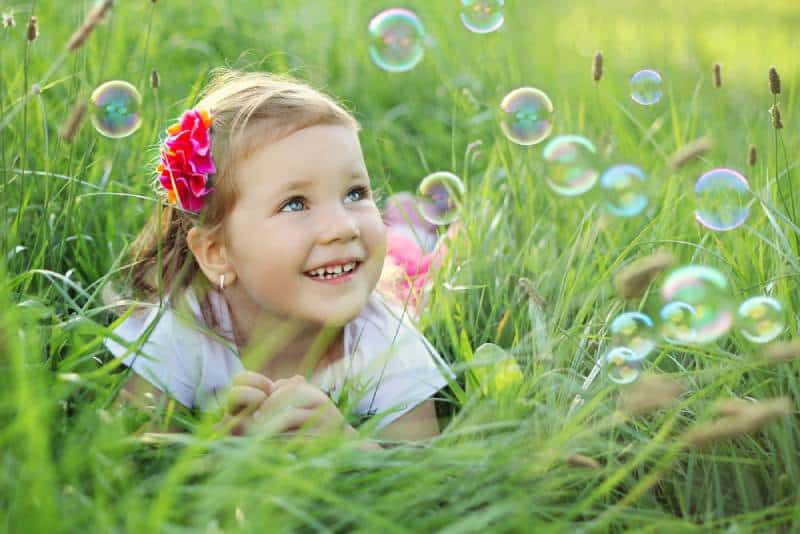
Three year old children aka little preschoolers will begin to construct simple sentences. They will be able to answer simple questions and through time even the complex ones.
At this point, your little one will be more and more engaged in interactive play (pretending to be a worker, feeding his animals, and so on). That is why it’s important to introduce them to interactive toys that will boost their imagination and keep them occupied for hours.
To help your child construct sentences and encourage their language development, ask them more complex questions related to numbers, shapes, and sizes of the toys or other things.
Avoid asking them yes/no questions, but focus on more complex ones such as: Where is your father going?
Another great method is to ask your child to retell you a plot from one of their favorite stories for kids, or cartoons.
You can help them with all the details in case they’ve forgotten. Read to them whenever you can and then talk about the book later on.
Also, you can introduce them to audiobooks. This is really great when you don’t have much time for reading, so you can basically wash the dishes while listening to audiobooks with your child.
You can also encourage them to tell you the words they didn’t understand so that you can explain it to them. There are plenty of other ways in which you can help them communicate and all you need is time and creativity!
Final Thoughts
I hope I succeeded in giving you a satisfying answer to your question: When do babies say mama and dada? and that the above tips on how to encourage your baby’s ability to communicate will be helpful to you and your baby.
I’ll repeat once again: Children learn through play.
Introducing them to new concepts, words, and things through play is one of the best methods for helping them with language development.
If you are concerned about your child having a speech delay, consult with your pediatrician. Also, keep in mind that many children are late talkers.
Like this post? Please share or pin it for later. You can also stay in the loop and follow us on Facebook, Instagram and Pinterest.
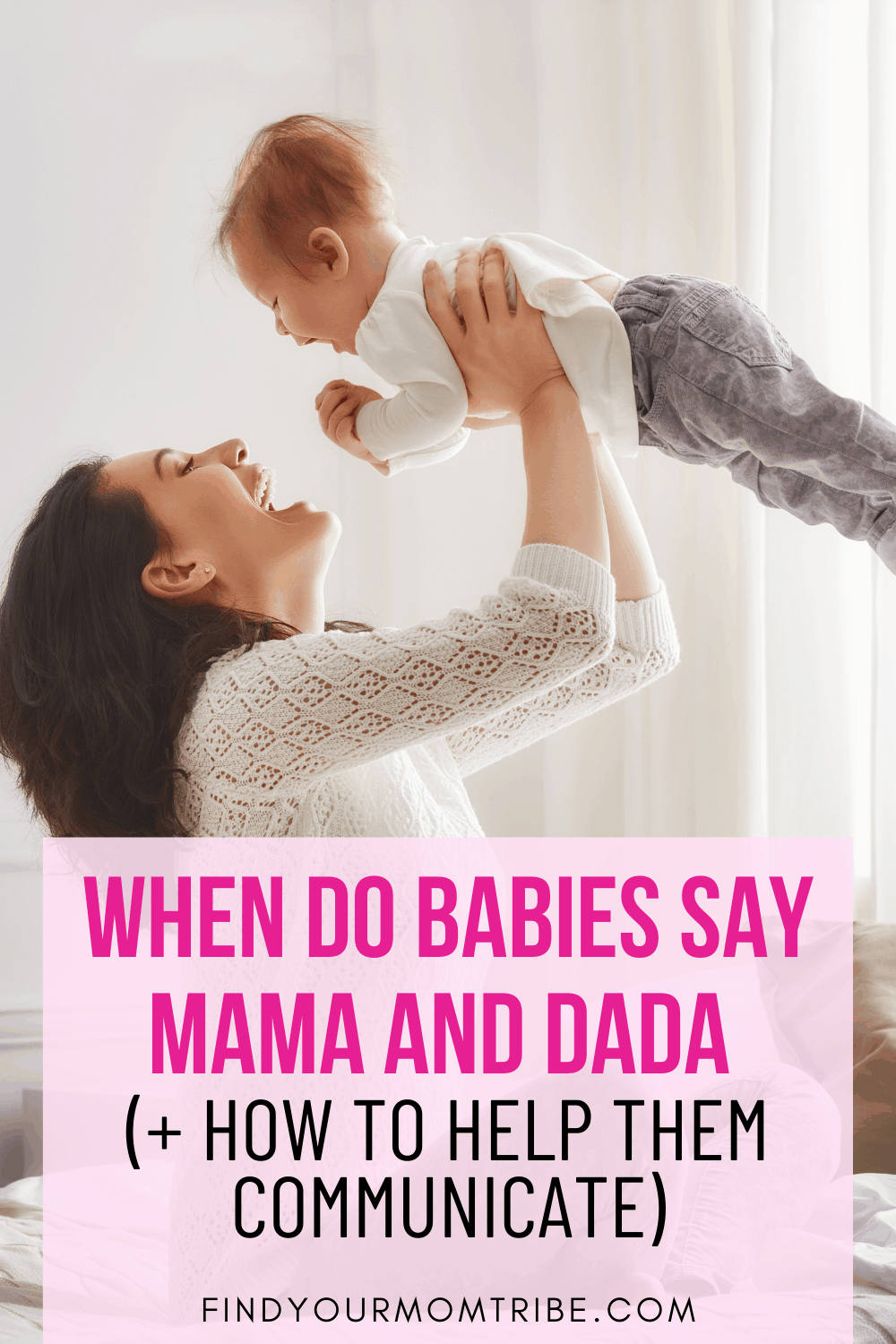
This post contains affiliate links. Please see our full disclosure or more info.

